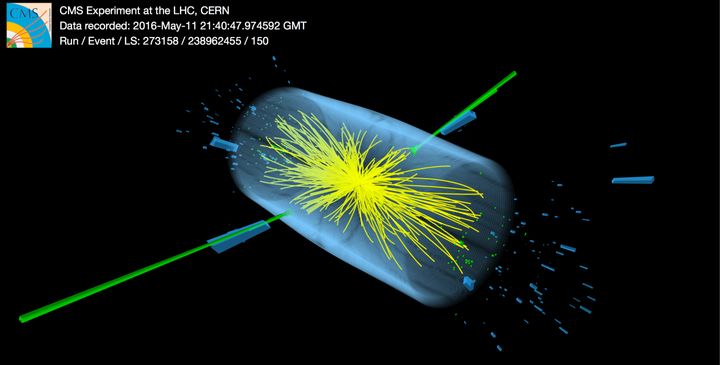
Working with the CMS collaboration collecting data at the Large Hadron Collider (LHC) we are looking to find rare processes to help us understand how the smallest components of the universe interact together. In 2015, the LHC started colliding particles at a center of mass energy of 13 trillion electron volts (larger than the 8 trillion electron volts from previous running) and we started looking for phenomena that needed the higher energy particles. The goal is to focus the beams of tiny protons and collide them together head on so that there is a higher probability of producing the more rare processes where new higher energy matter is created from the energy of the collision which is incredibly technologically challenging. Our CMS detector is like a camera that can see these proton collisions 40 million times a second. Most of these pictures would not have interesting phenomena in them so we discard them and only try to trigger on more spectacular events where higher energy particles are created to record them. You can find out more about the computing resources to process this data here. In 2015, with the initial run of data, there was a hint of a new particle at 750 GeV mass, but the number of pictures we recorded didn’t give us enough statistics to tell for sure, we needed more data.
This week, the LHC completes the 2016 proton-proton collision run and it has been spectacular. We will collect a factor of 16 more data than in 2015. This is also more than the projections for how much data we were expected to collect in 2016. With this much data, our collaboration is scrambling to find the computing resources needed to analyze it, but it is great to have so much data to look at. At the beginning of August, the LHC collaborations including CMS, reported on numerous new results for the initial part of this 2016 data collection which at that time was a factor of 5 more than 2015. The 750 GeV mass particle hint from 2015 unfortunately did not pan out with the larger data sample. This was just one analysis among many different searches for new particles. For instance, an example of a very high mass event is shown in the event display pictured above. To understand whether there is some new phenomena happening with this type of event, we have to find enough similar ones to build up evidence that is statistically robust. Luckily we have now a factor of three more data than we had even in August of this year to look for more interesting stuff. So stay tuned.
